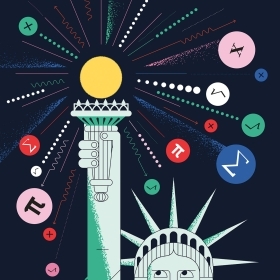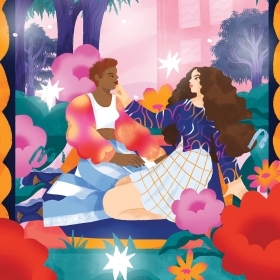当我被命名为编辑时,我新办公室最喜欢的新办公室的功能之一威尔斯ley, is the bookcase of bound volumes of magazines going back to the first issue in October 1916.
In that inaugural issue, Josephine H. Batchelder, class of 1896 and chair of the alumnae publishing committee, said that the magazine was founded with the conviction that Wellesley’s alumnae have “opinions to offer both upon local topics and upon issues of wider import” and are doing “interesting and various things in the world of which they will not be unwilling to speak,” and that the campus is “alive” with a community that is solving problems “architectural, social and academic.”
More than 100 years later, Wellesley is still striving to solve the world’s pressing problems. Last year, the College received a grant from the Carnegie Corporation to partner with Spelman College and the Global Institute for Women’s Leadership at King’s College London to host a virtual summit focused on the economic impact of the pandemic on women, particularly women of color. At the April 1–2 summit led by Olga Shurchkov ’01, associate professor of economics and director of the Knapp Social Science Center, and Layli Maparyan, the executive director of the Wellesley Centers for Women and professor of Africana studies, Wellesley faculty, along with experts and policymakers from around the globe, will convene to develop an agenda for systemic changes required to advance women’s economic equality. Alumnae will be invited; keep an eye out for communications from the College. In the meantime, we asked Shurchkov and four other alumnae with myriad perspectives on gender gaps in the economy to give us their views on this pivotal moment in history (“Toward an Equal Economy”)。
与此同时,在课堂上,学生渴望将他们对数学的兴趣结合在于他们对政治和社会正义的热情,并由Wellesley的新数学和民主研究所被绘制,由数学教授IsmarVolić和Stanley Chang共同创立(“How Math Can Save Democracy”)。(And before you comment on our infographic: Yes, we know that in reality peppermint stick pie would handily win more than 50% of the votes from the get-go.) The 1916 issue of the magazine also featured the democratic process. In “What California Women Have Done With the Ballot,” former Wellesley instructor and sociologist Mary Roberts Coolidge gave her perspective on the effect of California women—at least, white women—earning the right to vote in 1911.
Of course, one feature that could never have run in 1916 is our story about two-alum couples (“We Met at Wellesley”)。感谢WCAA董事会成员Amy Huang'99,以提出这个故事,以及所有与Amy Mayer'94谈论他们的经历的所有明矾。作为一个双性恋的女人,我经常惊讶于我一生中发生的进展 - 有时会沮丧我们必须走多远。我想起了我对Lyesley的“LGBTQ +计划和服务的威尔斯利的协调员AJ Guerrero的谈话”,关于许多无法在家中无法开放他们的性取向和性别身份的学生。这就是为什么,如Anna Ferrard-Zeiders'91,我已经意识到“一个人有责任出现在那里,表明这是一个积极的事情。”
我很荣幸能够成为威尔斯leymagazine’s ninth editor. I look forward to sharing stories about the College and our alums with you—in the pages of the print magazine and online—and I hope you will be in touch.





We ask that those who engage in Wellesley magazine's online community act with honesty, integrity, and respect. (Remember the honor code, alums?) We reserve the right to remove comments by impersonators or comments that are not civil and relevant to the subject at hand. By posting here, you are permitting Wellesley magazine to edit and republish your comment in all media. Please remember that all posts are public.